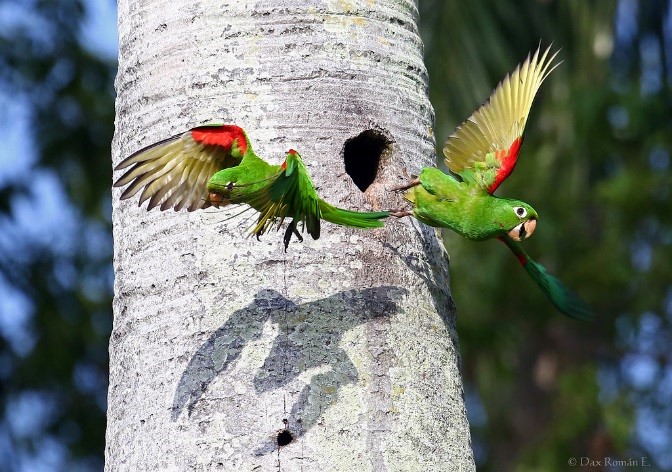Birdfinding.info ⇒ Uncommon and declining overall, but locally common in Santo Domingo and around Punta Cana, La Romana, and Cap-Haitien. Most readily found within Santo Domingo itself: especially at the National Botanical Garden and the Parque Mirador del Sur. In the southwestern D.R. it can often be found in the mixed forest section of Alcoa Road and at Cachote.
Hispaniolan Parakeet
Psittacara chloropterus
Endemic to Hispaniola, where it is widely but patchily distributed in lowland and montane forests, savannas, agricultural zones, and settled areas, including cities.
In the D.R. it persists in the southwest from the Sierra de Neiba south through the Sierra de Bahoruco to Jaragua National Park, in the Cordillera Central, in the Cordillera Septentrional, and in the southeast around La Romana and Punta Cana. Also occurs across much of Haiti from the northern coast and Massif du Nord south through the interior to the Massif de la Selle.
A large urban population inhabits the greater Santo Domingo area—which may now be the center of abundance for the species as a whole.
Introduced populations were reported on Puerto Rico and Guadeloupe, but they may never have become fully established and appear to be extirpated.
Identification
A large green parakeet with a bold bare white eyering. Bright red underwing coverts are conspicuous in flight and often visible on the front of the folded wing at rest.

Hispaniolan Parakeet, with red shoulder concealed. (Santo Domingo, Dominican Republic; December 8, 2013.) © Dax M. Román E.
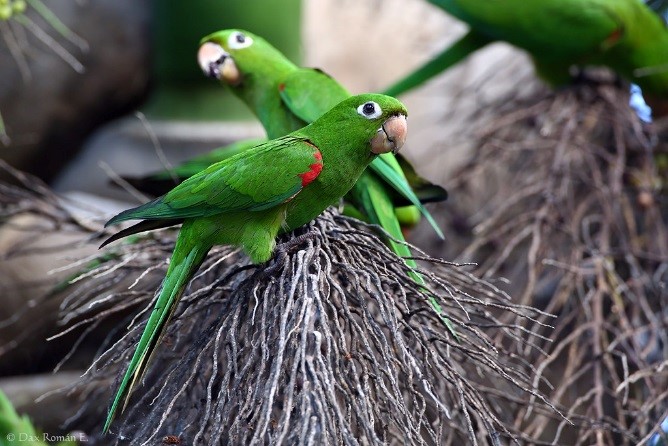
Hispaniolan Parakeet, with red shoulder visible. (Santo Domingo, Dominican Republic; December 8, 2013.) © Dax M. Román E.

Hispaniolan Parakeet, with red shoulder concealed. (Dominican Republic; December 10, 2013.) © Dax M. Román E.
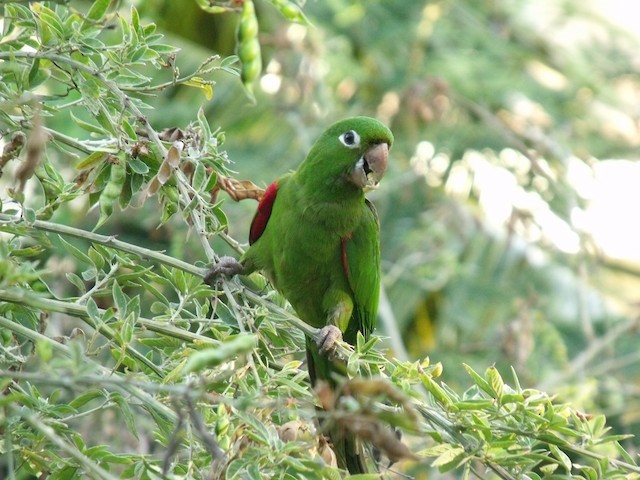
Hispaniolan Parakeet. (Bávaro, Dominican Republic; March 10, 2013.) © Steve Charbonneau
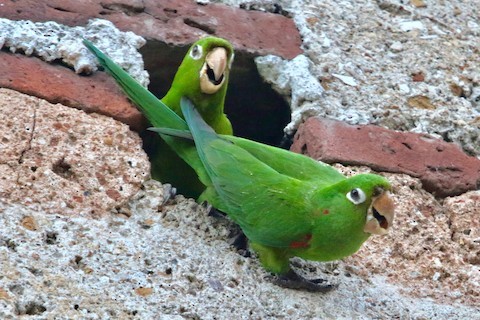
Hispaniolan Parakeets, at nest. (Santo Domingo, Dominican Republic; February 10, 2018.) © Gil Ewing
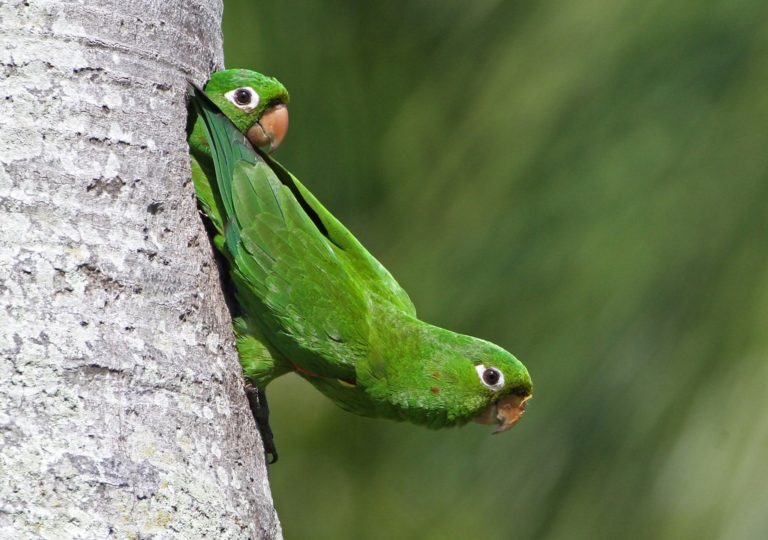
Hispaniolan Parakeets, at nest. (Santo Domingo, Dominican Republic; January 25, 2014.) © Dax M. Román E.
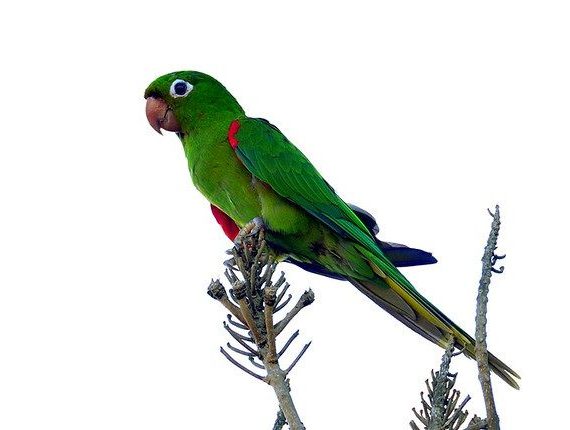
Hispaniolan Parakeet, with red shoulder visible. (Dominican Republic; September 25, 2008.) © Carlos De Soto Molinari
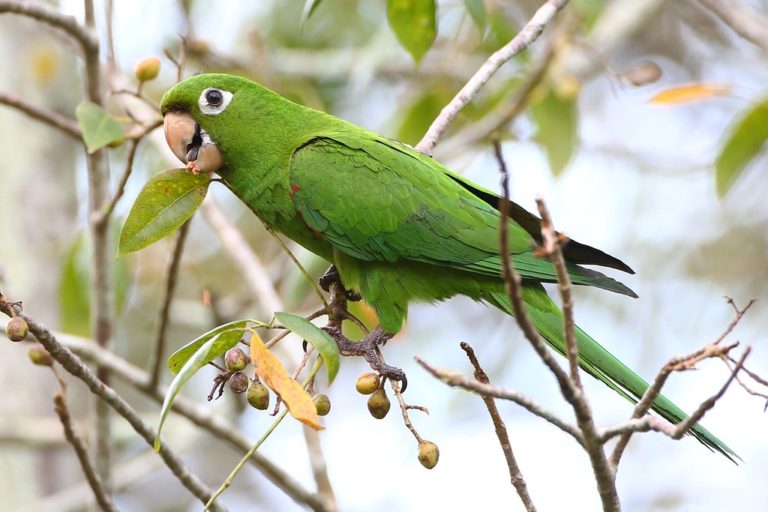
Hispaniolan Parakeet, with red shoulder concealed. (Dominican Republic; December 10, 2013.) © Dax M. Román E.

Hispaniolan Parakeet. (National Botanical Garden, Santo Domingo, Dominican Republic; April 8, 2019.) © Volker Hesse

Hispaniolan Parakeet, showing red underwing lining. (La Romana, Dominican Republic; March 10, 2015.) © John Sullivan

Hispaniolan Parakeet, with red shoulder concealed. (Santo Domingo, Dominican Republic; December 8, 2013.) © Dax M. Román E.
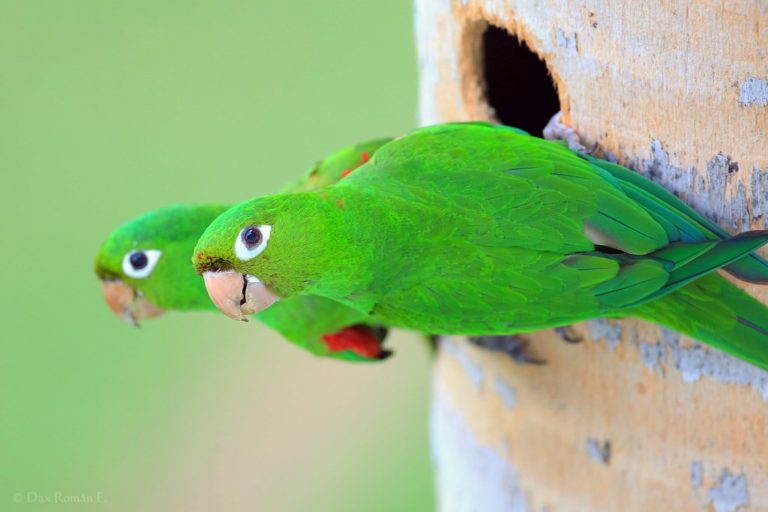
Hispaniolan Parakeets, at nest. (Santo Domingo, Dominican Republic; July 27, 2017.) © Dax M. Román E.
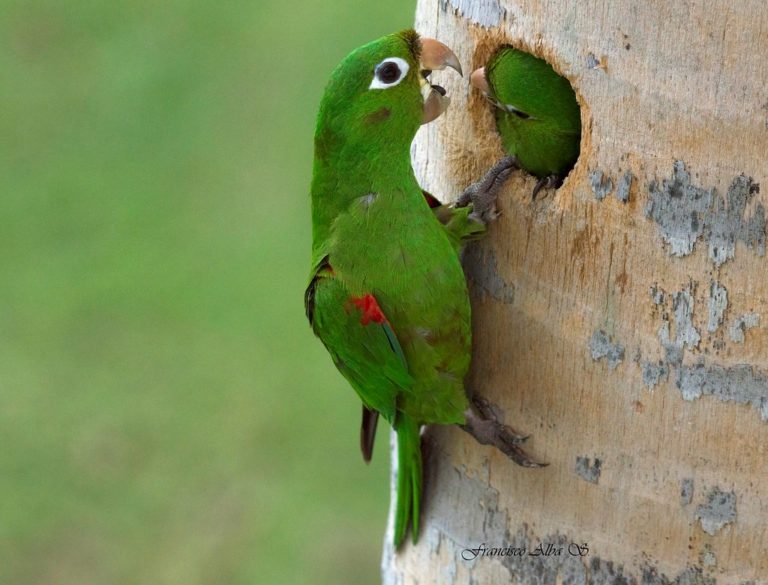
Hispaniolan Parakeets, at nest. (Santo Domingo, Dominican Republic; July 26, 2017.) © Francisco Alba Suriel

Hispaniolan Parakeet, at nest. (Santo Domingo, Dominican Republic; July 26, 2017.) © Francisco Alba Suriel
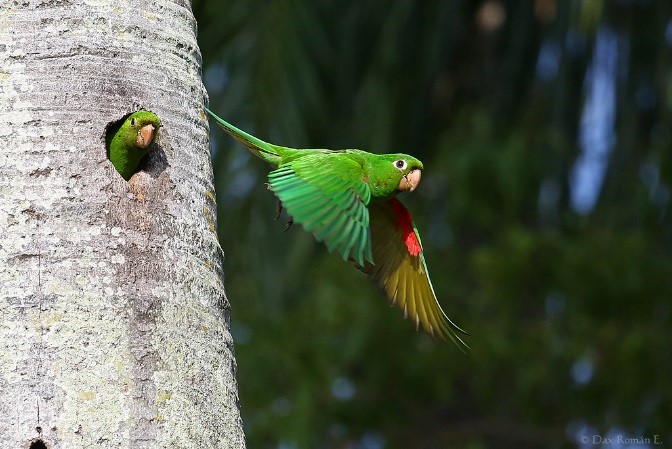
Hispaniolan Parakeets, at nest, showing red underwing lining. (Santo Domingo, Dominican Republic; February 15, 2014.) © Dax M. Román E.
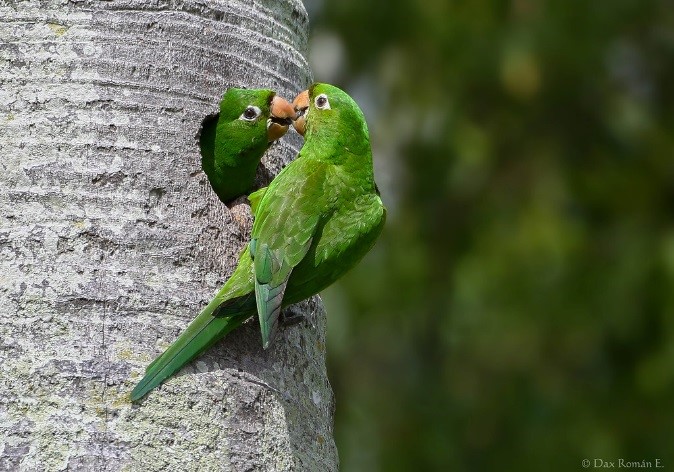
Hispaniolan Parakeets, at nest. (Santo Domingo, Dominican Republic; February 15, 2014.) © Dax M. Román E.
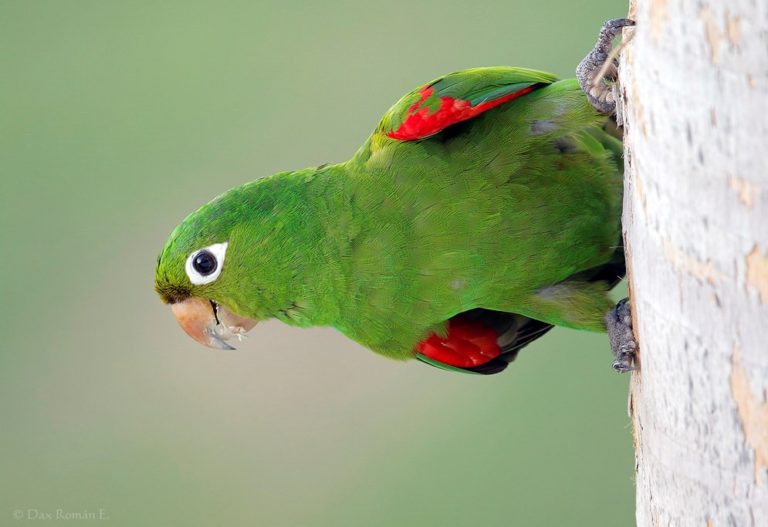
Hispaniolan Parakeet, showing its red shoulders. (Santo Domingo, Dominican Republic; July 27, 2017.) © Dax M. Román E.

Hispaniolan Parakeet, at nest. (Santo Domingo, Dominican Republic; February 15, 2014.) © Dax M. Román E.

Hispaniolan Parakeet, showing red underwing linings. (Dominican Republic.) © Dax M. Román E.
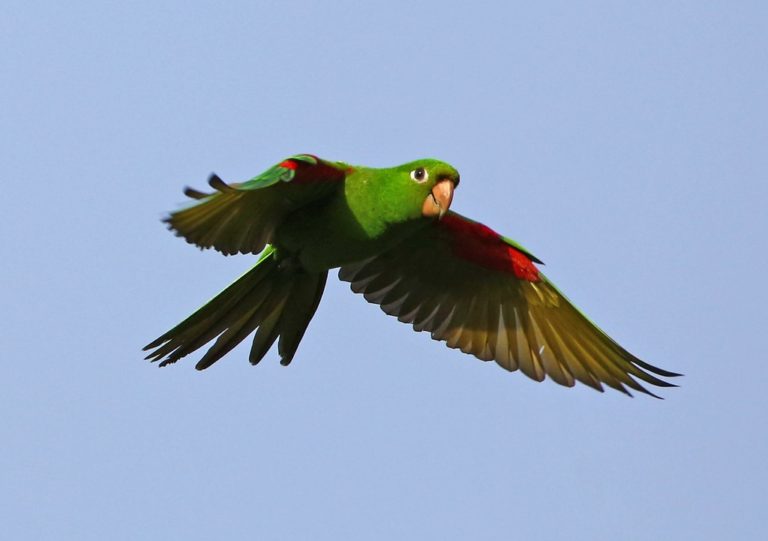
Hispaniolan Parakeet, showing red underwing lining. (Dominican Republic.) © Dax M. Román E.
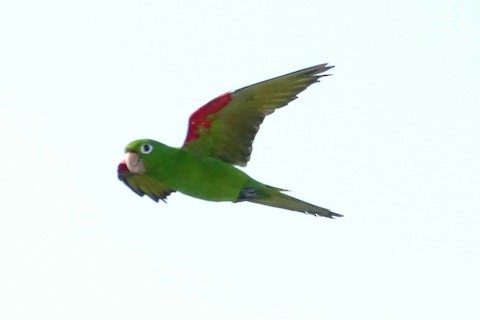
Hispaniolan Parakeet, showing red underwing lining. (Santo Domingo, Dominican Republic; July 17, 2018.) © Marlene De La Cruz-Guzman

Hispaniolan Parakeet, showing red underwing lining. (Santo Domingo, Dominican Republic; July 17, 2018.) © Marlene De La Cruz-Guzman
Voice. Common vocalizations mainly consist of raucous chattering:
Cf. Jamaican Parakeet. Hispaniolan and Jamaican Parakeets occur together in the southwestern D.R. Jamaican has a brownish throat and breast, but under some field conditions both species may appear all-green.
Wing coloration is diagnostic: Hispaniolan has bright red patches along the leading edge of the wing—mainly the underwing coverts, but usually visible on the front of the folded wing as well—and a yellowish cast on the underside of its flight feathers; whereas Jamaican’s wing is green with blue and black patches on its flight feathers.
Cf. Other Psittacara Parakeets. Two other Psittacara parakeets are very similar to Hispaniolan in being green overall with some red in the underwings, and could potentially occur with it due to local releases from captive stock. Cuban Parakeet is nearly identical, but somewhat smaller and has irregular flecks of red on its head and breast. White-eyed Parakeet—established in southern Florida and on Puerto Rico—is also very similar, usually with irregular flecks of red on its head and breast, but differs in having both red and yellow bars on its underwing coverts.
Notes
Monotypic species.
IUCN Red List status: Vulnerable.
The extinct form maugei, last recorded on Mona Island in 1892, has been considered a subspecies of Hispaniolan Parakeet, but historical opinion at the time of its discovery and recent research suggest that it is best regarded as a separate species, the Puerto Rican Parakeet.
References
BirdLife International. 2016. Psittacara chloropterus. The IUCN Red List of Threatened Species 2016: e.T22685695A93083622. http://dx.doi.org/10.2305/IUCN.UK.2016-3.RLTS.T22685695A93083622.en. (Accessed November 16, 2017.)
Collar, N., P. Boesman, and C.J. Sharpe. 2017. Hispaniolan Parakeet (Psittacara chloropterus). In: del Hoyo, J., A. Elliott, J. Sargatal, D.A. Christie, and E. de Juana (eds.). Handbook of the Birds of the World Alive. Lynx Edicions, Barcelona. https://www.hbw.com/node/54643. (Accessed November 16, 2017.)
eBird. 2019. eBird: An online database of bird distribution and abundance. Cornell Lab of Ornithology, Ithaca, N.Y. http://www.ebird.org. (Accessed June 21, 2019.)
Forshaw, J.M. 2010. Parrots of the World. Princeton University Press, Princeton, N.J.
Latta, S., C. Rimmer, A. Keith, J. Wiley, H. Raffaele, K. McFarland, and E. Fernandez. 2006. Birds of the Dominican Republic and Haiti. Princeton University Press, Princeton, N.J.
Olson, S.L. 2015. History, morphology, and fossil record of the extinct Puerto Rican Parakeet Psittacara maugei Souancé, Wilson Journal of Ornithology 127:1-12.
Raffaele, H., J. Wiley, O. Garrido, A. Keith, and J. Raffaele. 1998. A Guide to the Birds of the West Indies. Princeton University Press, Princeton, N.J.
